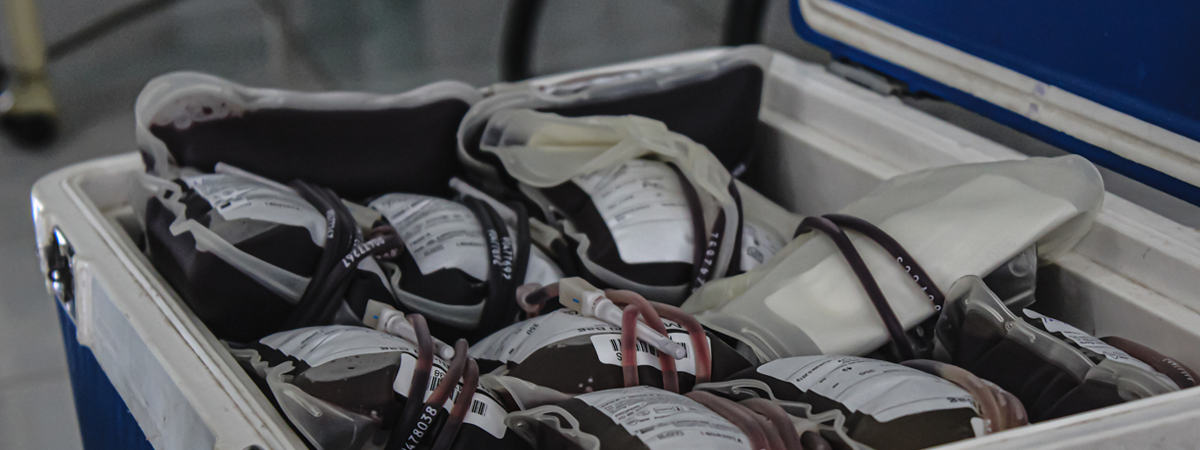


Advancing Prehospital Blood Products Management: How PSTrax Supports Safer Patient Care
In emergency medicine, every second counts – especially when managing blood products in the field. Pre-hospital blood administration is considered one of the most impactful advances in emergency medical services since its inception in the 1960s.
It offers trauma patients a fighting chance they might not otherwise have.
While the clinical benefits are well established, EMS agencies often face significant logistical challenges in tracking, storing, and administering blood products in the field.
The Evolution of Prehospital Blood Administration
Administering blood products before hospital arrival has been proven effective in military medicine for decades. However, civilian EMS systems have only recently begun adopting this practice on a broader scale.
In the City of Sunrise Fire Rescue in Florida, the impact of implementing whole blood was immediate.
Within 48 hours of going live with their program, they administered whole blood to their first patient, a gunshot victim who was discharged from the hospital just five days after the event.
In another case from Sunrise Fire Rescue, a car accident victim with extensive leg injuries was entrapped for approximately 45 minutes.
As responders monitored the patient inside the vehicle, they observed his condition beginning to deteriorate—blood pressure dropping, heart rate increasing, and mental status declining.
Assessing significant blood loss from leg injuries, the team administered whole blood while the patient was still trapped in the car.
After extrication, they transported him to the trauma center with normalized vital signs. After several extensive leg surgeries, the patient could save his legs and return home for rehabilitation.
These examples highlight the growing importance of blood products access in rural settings as well.
Having blood products available becomes even more critical in rural settings, where transport times to trauma centers can exceed an hour.
One program in Mississippi demonstrated this when paramedics diverted through a county to intercept blood from a BLS fire department, administered it to a severely injured patient, and arrived at the hospital with normalized vital signs—something that wouldn’t have happened without access to blood products.



Key Challenges in Prehospital Blood Management
Despite the clear benefits, implementing a pre-hospital blood program comes with significant challenges:
Regulatory Compliance
Blood products are among the most heavily regulated substances in healthcare.
Agencies must comply with FDA, AABB, and CAP standards and maintain meticulous storage conditions, chain of custody, and administration records.
Temperature Management
Blood products must be stored within specific temperature ranges to maintain efficacy.
This means specialized coolers with temperature monitoring capabilities are essential in the field.
Inventory and Waste Management
With shelf lives ranging from 21–35 days, depending on the product and preservative solution, managing inventory to minimize waste while ensuring availability presents a significant challenge.
Many agencies report waste rates of 35–40% when they don’t have exchange programs in place.
Documentation and Chain of Custody
Tracking blood products from collection to administration requires comprehensive documentation that must be maintained for at least 10 years per FDA regulations (21 CFR 606.160(d)).
Multi-Agency Coordination
Effective coordination in many regions requires coordination between multiple EMS agencies, hospitals, trauma centers, and blood suppliers.
Creating these partnerships can be challenging but essential for program success.
Introducing the PSTrax Blood Products Module
Designed for EMS agencies, ALS Fire, and air medical transport operations, the Blood Products Module addresses the key challenges of prehospital blood management tracking, compliance, safety, and reporting—all on one connected platform.
Integrated Temperature Monitoring
To maintain proper temperature monitoring, the system can be integrated with various temperature monitoring devices, including popular solutions like Delta Ice, APRU, and Credo coolers.
Real-time temperature monitoring sends regular updates that can be accessed on mobile devices.
These logs can be used to demonstrate proper temperature maintenance to hospital partners, build trust in the program, and potentially facilitate exchange programs.
Real-Time Tracking & Chain-of-Custody Management
The Blood Products Module provides full traceability, and tracking every step from storage through field administration to ensure accountability and safety.
Every movement is automatically logged, enhancing accountability and minimizing errors, which are crucial for patient safety and regulatory compliance.
Complete Lifecycle Management
Automated expiration date tracking helps agencies manage their inventory effectively, reducing waste while ensuring blood products are available when needed.
The system can also help facilitate exchange programs with hospitals or blood centers, allowing units nearing expiration to be redistributed to locations where they’re more likely to be used promptly.
In some rural settings, EMS agencies have even become “roving blood banks,” with hospitals occasionally calling them to bring blood products for patients who arrived by private vehicle.
This demonstrates how these programs can benefit the entire healthcare system.
Comprehensive Regulatory Compliance & Safety
PSTrax maintains comprehensive records for at least 10 years, ensuring compliance with FDA requirements without the administrative burden.
Detailed temperature logs help meet FDA, AABB, and CAP standards, keeping agencies inspection-ready with reports available at the touch of a button.
Reliable Data Capture & Integration
The module supports multiple identification methods, including barcodes, QR codes, and RFID scanning, to log blood products and quickly minimize manual entry errors.
This technology-forward approach is increasingly vital as prehospital blood programs mature, with many healthcare systems now working to integrate EMS records into their Electronic Medical Records (EMRs) so that information about the blood product can help clinical staff in emergency departments and trauma teams make decisions about ongoing care.
Accurate Usage Reporting & Analytics
Rounding out the module’s capabilities, PSTrax offers actionable reporting features that allow agencies to track usage trends, evaluate expiration rates, and make data-informed stocking decisions. These analytics support operational efficiency and reduce unnecessary waste across field units.
Multi-Agency Transfers & Regional Distribution (Future-Release)
PSTrax is developing functionality to coordinate blood products across multiple agencies, hospitals, trauma centers, and blood banks in a region. This upcoming capability will allow visualization of regional blood availability while maintaining full traceability. It is scheduled for a future release, expanding how agencies safely and efficiently deliver blood products to patients.



Implementing a Successful Blood Program
Agencies considering implementing a blood program should follow these best practices:
- Build Community Partnerships Early
Successful programs involve all community stakeholders from the beginning, including hospitals, blood suppliers, and even specific patient groups like Jehovah’s Witness liaison committees. This collaborative approach builds excitement and commitment from all partners. - Consider Various Blood Product Options
While whole blood has received much attention, component therapy (packed red blood cells and plasma) may be more practical for some agencies, particularly those concerned about waste. Component therapy often has longer shelf lives and may be more readily accepted by hospital partners for exchange programs. - Invest in Proper Storage Equipment
Temperature-controlled coolers with monitoring capabilities are essential. Various options exist at different price points, from the Delta Ice and APRU systems to Credo coolers and VeraCool products. Many agencies use redundant temperature monitoring, including digital backup thermometers, to maintain proper storage conditions. - Establish Clear Protocols
Develop clear blood product administration protocols, addressing trauma and medical patients. Some programs have found they underestimated opportunities to administer blood to medical patients, having initially focused primarily on trauma possibilities. - Track and Share Outcomes
Document patient outcomes and share success stories to build program support. Some agencies hold annual events recognizing survivors and the providers who administered blood products.
The Future of Prehospital Blood Management
As prehospital blood administration becomes more common, PSTrax continues to innovate.
Their development roadmap includes enhanced dashboard functionality showing regional blood availability, deeper EMR integration for seamless data transfer, expanded analytics to help agencies optimize stocking strategies, and support for additional blood product types as practices evolve.
The system is being developed with a distribution network in mind, allowing counties to see all blood products across multiple agencies in their jurisdiction.
Saving Lives Through Better Blood Management
The life-saving potential of prehospital blood administration is clear, but the logistics have historically been challenging. PSTrax’s Blood Product Tracking Module addresses these challenges head-on, providing a comprehensive solution that enhances compliance, reduces waste, and ultimately helps get blood products to patients who need them most.
With the right tools in place, agencies can move from simply storing blood products to confidently managing them in the field, helping to support better outcomes for patients and greater accountability for providers.
With PSTrax’s Blood Product Tracking Module, prehospital blood tracking is now more accessible, scalable, and aligned with the real-world needs of the emergency medical services sector.
Ready to advance your agency’s blood products management?
Schedule a demo today to see how PSTrax’s Blood Products Module can help your agency ensure compliance and focus on delivering safer patient care in the field.
